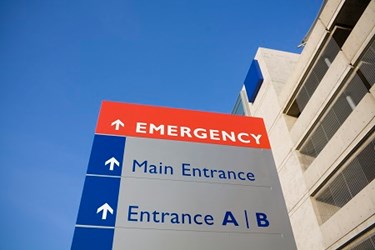Study Shines Light On Hospital Spending

By Christine Kern, contributing writer

Major insurer data analysis reveals “mind-boggling” variation across U.S. driving up healthcare costs.
There is striking variation nationwide among the prices hospitals negotiate with health insurance companies according to research from Carnegie Mellon economist Martin Gayno, and it is shedding light on hospital spending. The study, The Price Ain’t Right? Hospital Prices and Health Spending on the Privately Insured, provides an unprecedented examination into the process of price negotiation revealing how they are set and the wide variations that exist across geographic region and demographic groups.
“Virtually everything we know about health spending and most of the basis for federal health policy comes from the analysis of Medicare data,” says Zack Cooper, assistant professor of health policy and economics at Yale University, one of the study’s authors. “The rub is that Medicare only covers 16 percent of the population. The majority of individuals — 60 percent of the U.S. population — receive healthcare coverage from private insurers. This new dataset really allows us to understand what influences health spending for the majority of Americans. This information is critical to creating better public policy.”
The paper analyzed insurance claims data from Aetna, Humana, and UnitedHealth to look at the variation and increase in spending for privately insured healthcare consumers across the U.S. and found a lack of correlation between how much regions spend on Medicare beneficiaries compared to those who are privately insured. This suggests Medicare data is not a valid indicator when it comes to spending on the 60 percent of the U.S. population that is currently privately insured which is problematic as the bulk of research on healthcare spending is based on Medicare data.
The study further found prices are driven up by hospital mergers and monopolies, based on data provided by the Healthcare Cost Institute. Researchers assert, “Hospitals with greater market power have significantly higher prices,” as much as 15.3 percent higher than hospitals in areas with four or more hospitals, even when they control for other factors such as quality and population control.
The study notes almost one-third of all U.S. markets have healthcare system monopolies or near-monopolies, raising the issue of price regulation and price impact as a factor to be considered in legislating future mergers. “Our work shows that the consequences of this wave of mergers can be dire for consumers. There’s a real need for continued vigorous antitrust enforcement and other policy options to encourage competition and combat market power,” explained Gaynor.
“Price has been ignored in public policy,” Dr. Robert Berensen, a fellow at the Urban Institute told the New York Times. Berensen, who did not participate in the study, feels that has been counterproductive.” Berensen held up Maryland as an example that has established a government board to standardize prices for hospital services.
“The fact that prices are so high and can vary so much for hospital treatments of the same costs and quality is simply mind-boggling to foreign observers of the U.S. healthcare system,” says John Van Reenen, professor of economics and director of the Centre for Economic Performance at the London School of Economics, one of the study’s authors. “This is surely one of the reasons why U.S. healthcare absorbs a bigger share of GDP than in every other large advanced country.”
